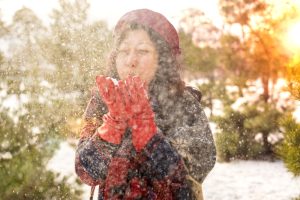
Get Ready for Hay Fever Season in Texas
Spring is here and blossoming across Texas. For those who suffer from hay fever, this time of year can be difficult, bringing itchy eyes, sniffling, and sneezing as pollen fills the air. However, with some proactive steps, you can help alleviate symptoms and keep you and your family comfortable. In this blog post, we’ll explore some practical tips for preparing for hay fever season.
What Exactly is Hay Fever?
Let’s first understand what hay fever is and how it can affect us. Hay fever, also known as allergic rhinitis, is a common allergic condition triggered by allergens such as pollen, mold spores, or pet dander. In Texas, pollen from trees, grass, and weeds can be problematic during the spring months, leading to a spike in symptoms.
Symptoms of Hay Fever Can Include:
- sneezing and coughing
- temporary loss of smell
- headaches
- earaches
- a stuffy nose
- itchy, red and/or watery eyes
- itchy throat, mouth, nose and/or ears
Medications for hay fever include nasal corticosteroids, which help prevent and treat nasal inflammation, nasal itching, and runny nose, and antihistamines, which help with itching, sore throat, and sneezing. Other medications may be tried, but those are the most commonly suggested. Many people do find that hay fever symptoms can be subdued with a combination of allergy medications and lifestyle adjustments. You may need to try a few before finding what works best for your specific allergies.
Adjusting your daily habits can help, and some people may get fewer hay fever symptoms by tweaking some simple things at home and making some smart changes. If you know what you are allergic to, you can help reduce your symptoms by limiting your exposure to your triggers by planning ahead.
4 Steps to Help Cut Down on Allergic Reactions
- Monitor Pollen Counts:
Stay informed about pollen levels in your area. Many weather apps and websites provide daily pollen counts.
- Close doors and windows:
While letting in the fresh spring air may be tempting, keeping windows and doors closed can prevent pollen from entering your home. Instead, use your air conditioner to circulate air and maintain a comfortable indoor environment.
- Maintain Indoor Air Quality:
Use an allergy-grade filter (HEPA) in a standalone unit or your home’s air system, and remember to change it regularly. Dusting and cleaning your home will help reduce indoor allergens, and you should vacuum carpets weekly with a vacuum cleaner that boasts a small-particle or HEPA filter.
- Plan Outdoor Activities Wisely:
On high pollen days, stay indoors, especially on dry and windy days. When pollen counts are highest, avoid exercising or working outdoors in the early morning. If outdoor activities are unavoidable, wearing sunglasses and a wide-brimmed hat can help shield your eyes and face from pollen.
Texas ENT & Allergy is Here to Help with Your Hay Fever
Hay fever season in Texas can be challenging, but with proactive planning and implementing some of our tips, you can help minimize some of your symptoms. If you have hay fever, Texas ENT & Allergy may be able to help test for your specific allergies and help you treat your symptoms. Schedule an appointment today or call us at (979) 693-6000.



